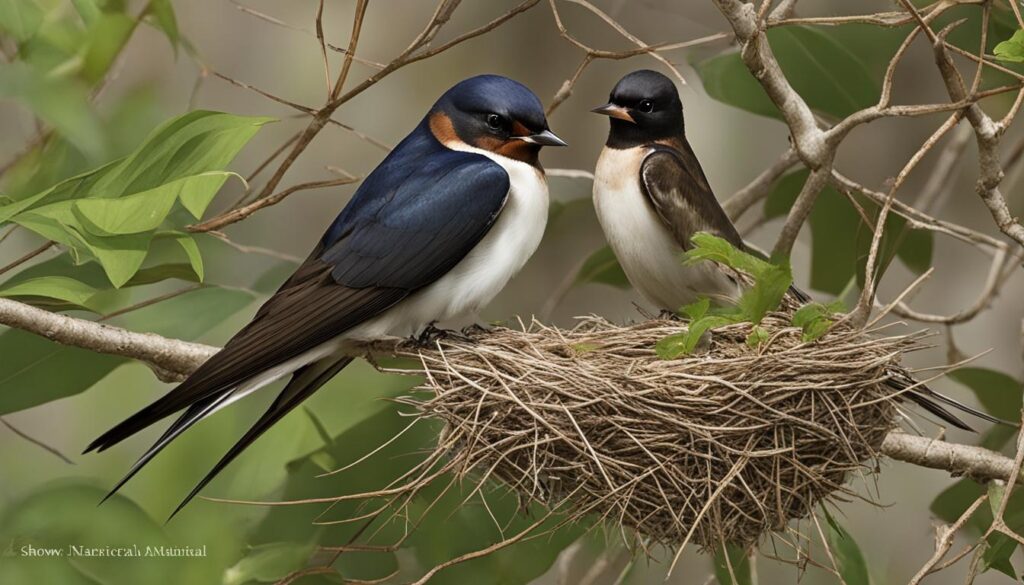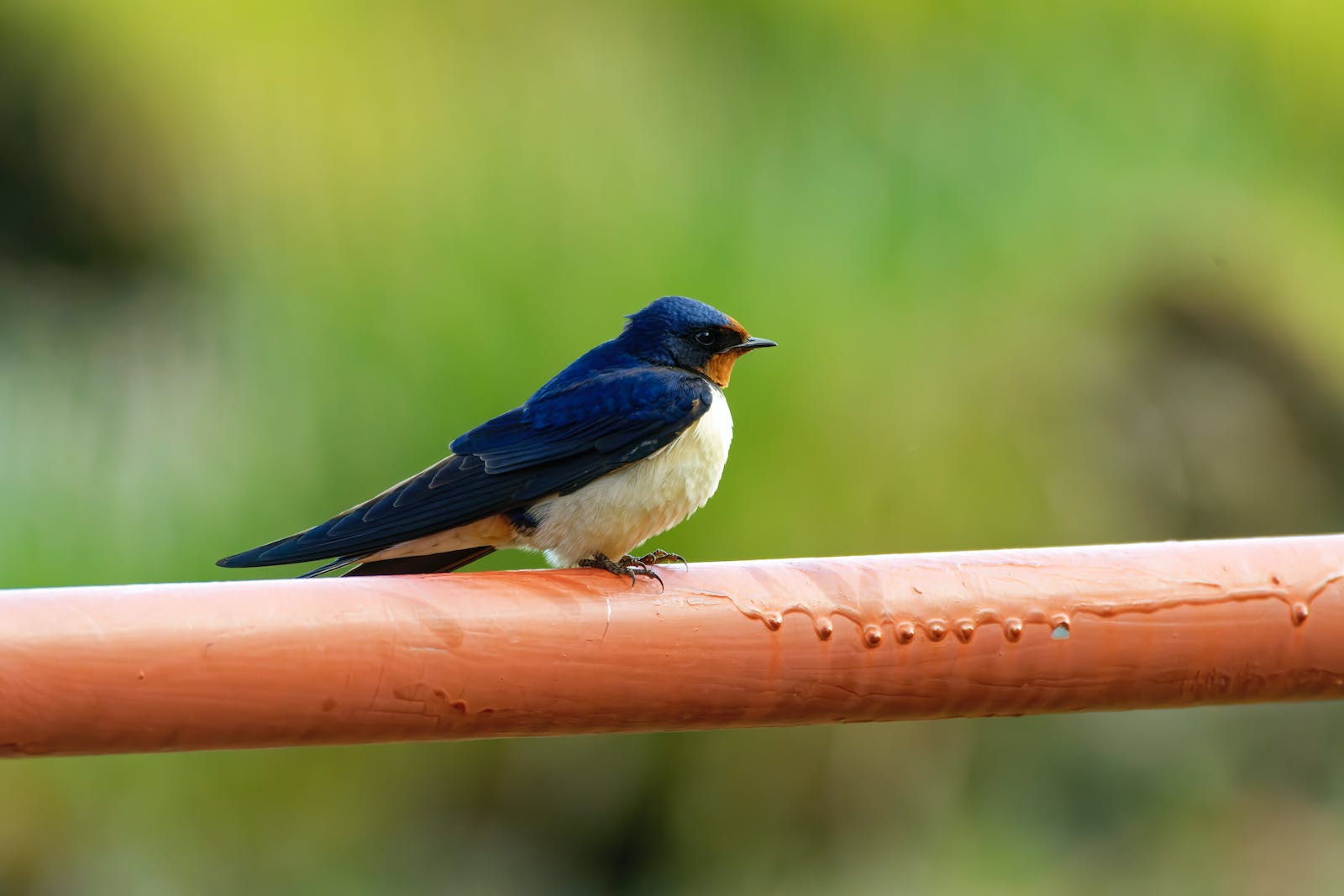African and American swallows are two distinct species of birds that have noticeable differences in their characteristics, habitats, and migratory patterns. This article provides a comprehensive comparison and analysis of these two types of swallows, highlighting the key distinctions between them.
Key Takeaways
- African and American swallows differ in size, with African swallows being smaller on average.
- Plumage in African and American swallows varies, with different colors and patterns depending on the species.
- African swallows tend to exhibit more diverse migratory patterns within Africa, while American swallows undertake long-distance migrations to Central and South America.
- Nesting habits differ, with African swallows utilizing natural cavities or man-made structures, while American swallows often choose man-made structures like barns or birdhouses.
- Understanding the differences between African and American swallows enhances our appreciation for the richness and diversity of the swallow bird family.
Characteristics of African Swallows
African swallows possess unique physical features and exhibit fascinating behaviors that set them apart from other species. These traits contribute to their distinctiveness and make them a subject of intrigue for bird enthusiasts. Here, we explore the noteworthy characteristics of African swallows including their size, plumage, and behavior.
Size:
African swallows are generally smaller in size compared to their American counterparts. The largest species, the Mosque Swallow, has an average length of 9.4 inches (24 cm), making it the largest swallow species in Africa. Despite their small size, African swallows are known for their agility and swift flight.
Plumage:
African swallows showcase a diverse range of colors and patterns in their plumage. Different species exhibit variations in coloration, from a combination of blues and browns to vibrant shades of red, black, and white. The vibrant plumage of African swallows adds to their visual appeal and makes them a delight to observe in their natural habitat.
Behavior:
African swallows are highly sociable birds, often forming large colonies for nesting and breeding. They are known for their intricate aerial displays, including graceful swoops and dives, as they hunt for insects on the wing. These swallows exhibit remarkable agility and maneuverability during flight, making them a captivating sight to behold.
Table: Characteristics of African Swallows
| Characteristics | Description |
|---|---|
| Size | Average length of 9.4 inches (24 cm) for the largest species |
| Plumage | Diverse colors and patterns, ranging from blues and browns to vibrant shades of red, black, and white |
| Behavior | Highly sociable birds, known for forming large colonies and performing intricate aerial displays |
Understanding the characteristics of African swallows allows us to appreciate their uniqueness within the avian world. Their small size, vibrant plumage, and sociable behavior make them a fascinating species to study and admire. Stay tuned as we delve deeper into the distinctive traits of American swallows in the next section of this article.
Characteristics of American Swallows
American swallows, such as the Barn Swallow and Purple Martin, possess distinct physical features, behaviors, and traits that set them apart from their African counterparts. These differences contribute to their unique identities within the swallow bird family.
Physical Features: American swallows are slightly larger in size compared to African swallows. The Barn Swallow, for example, has an average length of 7.1 inches (18 cm). Their plumage is also distinctive, with the Barn Swallow showcasing blue upperparts and orangey underparts, while male Purple Martins exhibit a purplish-black coloration. These vibrant hues add to their visual appeal and make them easily recognizable.
Behavior: American swallows are known for their agile flight and acrobatic hunting behavior. They are adept at capturing insects on the wing, performing aerial maneuvers with precision and grace. This hunting technique allows them to efficiently forage for food and sustain their energetic lifestyles. Like African swallows, they also exhibit social behavior and form colonies for nesting and breeding.
Traits: The traits of American swallows reflect their adaptability and resilience. They have adapted to human-made structures for nesting, often choosing barns, bridges, or birdhouses as their preferred locations. The construction of cup-shaped nests made of mud and grass demonstrates their resourcefulness and ability to coexist with human settlements. This characteristic behavior highlights the versatility and tenacity of these American avian species.
| Characteristics | American Swallows | African Swallows |
|---|---|---|
| Size | Slightly larger | Smaller |
| Plumage | Vibrant colors | Varies depending on species |
| Flight Behavior | Agile and acrobatic | Varies depending on species |
| Nesting Habits | Man-made structures | Varies depending on species |
Overall, the characteristics of American swallows encompass their physical features, behavior, and traits, making them a fascinating part of the avian world. Their larger size, vibrant plumage, agile flight behavior, and adaptability to human-made structures allow them to thrive in their North American habitats. Understanding these distinguishing characteristics enhances our appreciation for the diversity and uniqueness of American swallows.

Habitat and Distribution
African and American swallows have distinct habitats and distributions. African swallows can be found in various habitats across the continent of Africa, including forests, grasslands, wetlands, and deserts. They have adapted to diverse environments and can be spotted in different regions of Africa, depending on the species. For example, the Mosque Swallow, the largest swallow species in Africa, prefers open woodlands and savannas, while the Lesser Striped Swallow is commonly found near bodies of water such as rivers and lakes.
American swallows, on the other hand, are mainly found in North America, with some species venturing into Central and South America during migration. They prefer open habitats such as fields, pastures, and marshes, often near water sources. The Barn Swallow, one of the most widespread swallow species in the Americas, favors areas with open spaces for hunting insects and has a preference for nesting in man-made structures such as barns and bridges. Similarly, the Purple Martin seeks out open areas near water bodies for hunting and nesting purposes.
In terms of distribution, African swallows have a wider range compared to their American counterparts. Different species of African swallows occupy specific regions within Africa, showcasing their adaptability to different climates and habitats. Some species, like the Red-breasted Swallow, are restricted to certain parts of the continent, such as southern and eastern regions. Others, like the Greater Striped Swallow, have a more extensive distribution across multiple African countries.
American swallows, on the other hand, have a more limited distribution primarily within North America. They can be found throughout the United States and Canada, with some species migrating to Central and South America during the winter months. The Tree Swallow, for instance, breeds across most of North America and winters in Mexico and the southern United States. This restricted distribution is influenced by the specific habitat requirements and the availability of suitable nesting and foraging areas for American swallows.
Habitat and Distribution Summary:
- African swallows inhabit diverse habitats across Africa such as forests, grasslands, wetlands, and deserts.
- American swallows prefer open habitats in North America, including fields, pastures, and marshes.
- African swallows have a wider distribution range within Africa, with different species occupying specific regions.
- American swallows have a more limited distribution primarily within North America, with some species migrating to Central and South America.
| Swallow Species | Habitat | Distribution |
|---|---|---|
| Mosque Swallow | Open woodlands, savannas | Various regions of Africa |
| Lesser Striped Swallow | Near water bodies | Africa, with a preference for southern and eastern regions |
| Barn Swallow | Fields, pastures | North America, with migrations to Central and South America |
| Purple Martin | Open areas near water bodies | North America, with migrations to Central and South America |
Migratory Patterns of African and American Swallows
African and American swallows have distinct migratory patterns that are influenced by their geographical locations and environmental factors. Understanding these patterns is crucial for comprehending the behavior and movement of these avian species.
African swallows exhibit diverse migratory behaviors, with some species being resident birds that remain in Africa year-round while others undertake long-distance migrations within the continent or even to Europe. For example, the Mosque Swallow is a resident species, which means it stays in Africa throughout the year. On the other hand, the Barn Swallow, a common American swallow species, migrates from North America to Central and South America during the winter months. This long-distance migration can cover thousands of miles and involves large flocks of swallows.
It is important to note that the specific migratory patterns of African and American swallows can vary among different species and populations. These patterns are influenced by factors such as food availability, climate conditions, breeding cycles, and the need to find suitable wintering grounds. By adapting their migratory behaviors, these swallows are able to optimize their chances of survival and successful reproduction.
| African Swallows | American Swallows | |
|---|---|---|
| Migratory Behavior | Variable, with some species being resident birds staying in Africa year-round, while others undertake long-distance migrations within Africa or to Europe. | Long-distance migration from North America to Central and South America during the winter months. |
| Migration Route | Varies based on species, with some swallows migrating within Africa and others crossing the Mediterranean Sea to reach Europe. | North America to Central and South America. |
| Wintering Grounds | Some species remain in Africa year-round, while others winter in different parts of the continent or even in Europe. | Central and South America. |
These migratory patterns highlight the remarkable adaptability of both African and American swallows. By utilizing different habitats and territories throughout the year, they are able to maximize their chances of survival and reproduce successfully. Further research and studies continue to enhance our understanding of the exact mechanisms and factors that influence the migratory patterns of these fascinating avian species.

African Swallow Nesting Behavior:
- Nest in large colonies
- Utilize natural cavities, cliffs, or man-made structures
- Build nests made of mud, burrows, or nests in caves
- Example species: Mosque Swallow
American Swallow Nesting Behavior:
- Nest in colonies
- Prefer man-made structures such as barns, bridges, or birdhouses
- Construct cup-shaped nests made of mud and grass
- Example species: Barn Swallow, Purple Martin
In summary, African and American swallows have distinct nesting habits that reflect their adaptation to different environments. African swallows typically nest in natural structures or man-made buildings, while American swallows prefer man-made structures such as barns and birdhouses. Understanding their nesting behaviors adds to our knowledge and appreciation of these remarkable bird species.
Conclusion
In summary, African and American swallows display distinct differences in their characteristics, habitats, migratory patterns, and nesting habits. African swallows are generally smaller in size and showcase a diverse range of plumage colors and patterns. They exhibit varying migration behaviors within Africa, with some species remaining year-round while others embarking on long-distance journeys to different parts of the continent or even Europe.
American swallows, on the other hand, are slightly larger and possess distinct plumage characteristics. They are known for their impressive flight agility and acrobatic hunting behavior. During the winter months, many American swallows undertake extensive migrations to Central and South America, covering thousands of miles in the process.
Both African and American swallows exhibit a preference for nesting in colonies. African swallows often choose natural cavities, cliffs, or man-made structures for their nests, while American swallows frequently select man-made structures such as barns, bridges, or birdhouses. These nesting behaviors highlight the adaptability of these species to their respective environments.
Final Thoughts on African and American Swallows
Understanding the distinctions between African and American swallows enriches our knowledge and appreciation for the diverse range of species within this bird family. By recognizing their unique traits, habitats, migratory patterns, and nesting habits, we gain a deeper understanding of their ecological roles and the importance of conservation efforts to protect these remarkable birds.
FAQ
What are the key differences between African and American swallows?
African and American swallows differ in size, plumage, habitat, migratory patterns, and nesting habits.
How do the characteristics of African swallows compare to American swallows?
African swallows are smaller in size, have diverse plumage, and exhibit social behavior. American swallows are slightly larger, have distinct plumage, and are known for their agile flight and acrobatic hunting behavior.
What are the preferred habitats and distribution of African and American swallows?
African swallows can be found in various habitats across the continent of Africa, while American swallows are predominantly found in North America, with some species migrating to Central and South America.
How do the migratory patterns of African and American swallows differ?
African swallows have variable migration patterns within Africa, with some species staying year-round and others undertaking long-distance migrations. American swallows, particularly those from North America, migrate to Central and South America during winter.
What are the nesting habits of African and American swallows?
African swallows typically nest in large colonies, often in natural cavities or man-made structures, while American swallows also nest in colonies, usually in man-made structures such as barns or birdhouses.



